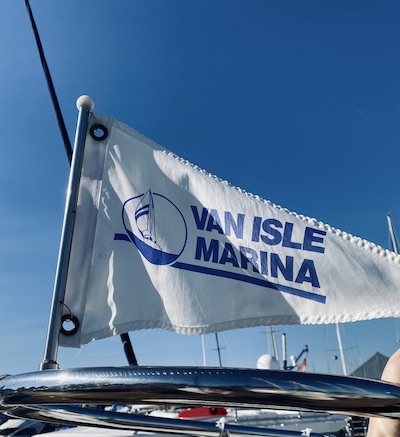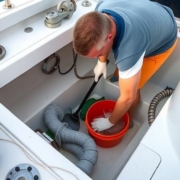What Length Boat is Right for Me?
A Guide to Picking Your Perfect Boat Length
If you are new to boating or looking to purchase your first yacht, you may wonder which boat length is the right one to choose.
Getting a boat that is the right size is key to being able to enjoy life on the water. You want to find a yacht that is small enough to be easily maneuvered while still being big enough to hold your family, and your fishing gear, comfortably.
Not sure where to start when it comes to finding the right boat length measurement? This guide will cover the factors that influence the size of boat you need – from the number of people using it, to what you are going to use it for.
For more general advice on selecting your first yacht, see this guide to choosing the right yacht for your needs.
What is the Average Yacht Length?
You only have to look around a local marina to see that boats come in a multitude of lengths. Everything from a small fishing skiff to a 200ft long mega yacht and everything in between.
Because the length of a boat determines the safety equipment a boat must carry under Canadian law, all vessels are categorized into one of four groups:
- Pleasure Craft under 6m
- Pleasure Craft over 6m
- Non-pleasure craft under 6m
- Non-pleasure craft over 6m
Knowing which category your yacht falls into allows you to easily identify the safety equipment requirements as set out in the Transport Canada Safe Boating guide.
In general, pleasure craft vessels range between 7 to 15m (25-50ft) in length, but there is a huge difference between driving a 7m yacht and a 15m+ one.
Which yacht length you ultimately choose will depend on several factors.
How to Choose the Right Boat Length
The right size boat for one family may not work for another. The yacht length you ultimately choose will be influenced by:
- The number of people who will be using it
- The intended use of the boat
- The type and model of boat you prefer
- The space or location you have to store the boat
- Your budget for both the initial purchase and ongoing costs
Be sure to consider each of these factors when deciding what boat length is right for you.
The Right Boat Length for Different-Sized Families
Most people purchase a boat because they dream of lazy days cruising with family or the excitement of a fishing expedition with their friends. If you want to be able to bring other people along for the ride, you must ensure the boat is big enough for everyone.
The best way to find out if a boat fits your family and all your boating needs is to go together to try it out. And remember, when considering how many passengers can fit onboard the boat, it’s not the number that counts, it’s the weight! Maximum capacity for pleasure boats under 6m can be found on the compliance notice that is posted onboard.
Tip: When choosing a boat length, add up to one meter more space than you need. This will allow a little extra room for people to move around safely and comfortably.
It’s also worth noting that different types of boats may have the same length but a different capacity. For example, while 6m fishing boats can hold 4 or 5 anglers comfortably, similarly sized deck boats could hold double that amount as they have different seating layouts.
Which Boat Size is Best for Different Activities?
Another thing to consider when choosing the length of your boat is what activities you are looking to do in it. The purpose and the type of location you will be using it in can have a bearing on what size boat is the best.
For example, if you want to fish for salmon in the ocean, a larger boat is required than if you are freshwater fish
ing. This is because a bigger boat has a longer boat range to reach the good fishing grounds and can stand up to the rougher ocean waves. On the other hand, a smaller vessel works best to get into the nooks of a lake or river fishing spot.
Some recommended boat lengths for different activities include:
- Cruising / leisure – 6m – 9m (20-30ft)
- Offshore fishing – 9m+ (30+ft)
- Fresh water fishing – 4.5-6m (15-20ft)
- Watersports (water skiing etc) – 5 – 7.6m (17-25ft)
For more information on boat types and what boat length you should buy based on various boating activities see this guide by boatingvalley.com.
Do I Have Somewhere to Store My Yacht?
One vital thing to consider when viewing motor yachts is whether you have suitable storage facilities.
If you plan to store the yacht in a marina, make sure suitable moorage or dry storage space is available. There may be some limits on the size of boat that can be hauled and stored.
If you plan to store your new yacht at home, make sure you can get a trailer big enough, that your vehicle can tow it and that you have somewhere safe to park it on your property.
What Size Boat Can Your Budget Fit?
Of course, budget is a big deciding factor for most people when choosing a new boat.
You may need to make compromises to get the size of boat you want for the budget you have such as choosing a smaller new boat or opting for a second-hand boat to get the size you need.
Tip: Remember that all boats need to have regular maintenance which will cost more for a larger boat.
Get Help Finding the Right Size Yacht for Your Family
At Van Isle Marina, our yacht sales team are experts in finding the right size boat to fit your family and the activities you wish to do in it. We are an exclusive supplier of Pursuit boats. With a range of offshore, dual console and sports yachts available ranging from 7.8m – 14m in length, there is a model to suit everyone.
Located in Sidney, BC, Van Isle marina can accommodate yachts up to 200ft (60m) and beyond in our docks and can haul out boats up to 70ft for dry storage.
Contact us today to find out how we can support your journey to becoming a boat owner.

